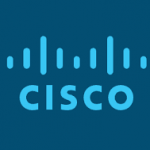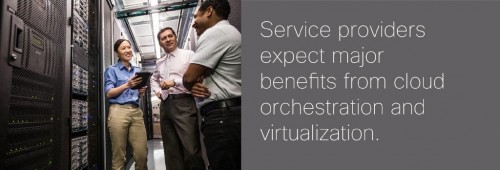
‘Virtualization’ for Indian Cable TV industry – The Next Big Leap!
As cable operators (aka multi-system operators or MSOs) across the country upgrade and revamp their infrastructure, Cisco has been helping them with the Digitization and IPfication efforts. In a market where the competition is ferocious and diverse and includes broadband providers ranging from telecom companies to newer players like Google (Fibre) as well as OTT video players like Netflix, MSOs have to capitalize on every competitive advantage. In addition to their traditional cable and video services, cable providers are making a strong play for the broadband market, with approximately 100 million cable subscribers who can potentially be converted to broadband subscribers via DOCSIS technology. To successfully execute these exciting opportunities, service providers have to ensure that they have a powerful and flexible infrastructural base that will quickly expand and stretch as needed.
Cisco has been advocating the benefits of virtualization to MSOs to help build just such a platform, with the benefits of streamlining costs and maximizing productivity and revenue. Virtualization allows SPs (Service Providers) to unify networking, storage and computing assets by decoupling functionality from dedicated and custom-built hardware and moving it into software that runs on virtual machines. Since these virtual machines can run on standard multipurpose server platforms that can also run other software and services, it helps consolidate hardware and maximize utilization.
Cloud-based offerings have been built up on a virtualization foundation and are now a common service that enterprises (including many service providers) have been migrating to. Depending on the requirements of the company, their cloud configurations can be:
- Public cloud: where the infrastructure that hosts the virtual machines all resides offsite on third party premises, which also hosts other companies and their virtual machines.
- Private cloud: the infrastructure is owned and managed by the company within their private network and on their premises.
- Hybrid cloud: where an enterprise uses a combination of public and private clouds, to suit different requirements.
To illustrate, the traditional cable provider setup typically includes –
- Several on premise stovepipe systems, each with specialized hardware or wiring working in isolation to provide a specific video function (e.g. one system for encoding channels for HD live broadcast, another to do the exact same thing but for an on-demand service).
- Dedicated manpower to manually configure and maintain it.
- Constant upgrade of this specialized hardware to keep pace with technology.
Naturally, there is much duplication of effort and resources, as well as underutilization of expensive custom hardware. Furthermore, scaling up this type of headend video data centre is cumbersome and time consuming; adding new services to keep up with the technology and market demand will not happen in time to capture the market segment as customers are quick to migrate to someone who is already offering the service.
The same video functions that earlier ran on dedicated hardware now runs on Cisco Virtualized Video Processing (V2P), an open programmable virtual platform. Cable providers can use the services of a cloud operator who provides the hardware infrastructure, computing, network and storage resources to run virtual video functions that were earlier tied to dedicated appliances. This offloads the hardware procurement, management logistics and upgrade hassles to the cloud provider, who provides what is needed on demand. The platform also supports industry standard orchestration, so the various video functions can be automatically configured and managed with minimal manual intervention. The functions can be rapidly assembled as needed into the required video workflows, and what used to earlier take weeks can now be achieved in a matter of minutes on this virtual platform.
The cable provider maintains complete software control over the hardware infrastructure. Hardware can be added or eliminated quickly, based on need and systems can be quickly scaled up during surge times, paying only for the resources that are used. The same hardware resources can deliver different video services, based on the virtual configuration and orchestration. For example, a popular channel like Star TV can be simultaneously converted into multiple streams: an HD stream for High Definition TVs in the family room, another one to display on a PC or laptop, and even a more compact stream for mobile phones for viewing on the go. All this can be achieved automatically and remotely, without the need for manual monitoring or intervention.
This virtualized setup also provides clear visibility into all available hardware resources, so that MSOs can better manage and distribute their software-based functions for optimum performance. Automatic configuration and provisioning abilities help in capacity planning so a predictable level of performance can be maintained. Furthermore, since the specialized video functions have been abstracted into software and are now portable, it allows for better management of load and capacity across the headends to meet requirements in real time.
By simplifying video operations and the underlying hardware configuration in this virtualized and cloud-based setup, Cisco has freed up MSOs to focus on innovating for the competitive edge. The automated workflows and centrally provisioned platform translates into lower costs, highly optimized performance and faster times to market. Setting up a dependable, agile and highly efficient virtualized environment is the first step for MSOs in their journey to succeeding in a fast moving and fast changing world of video.
Tags:



